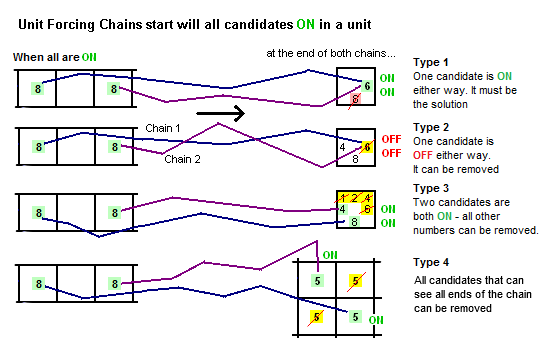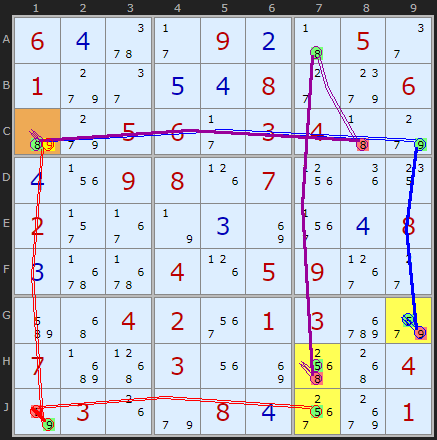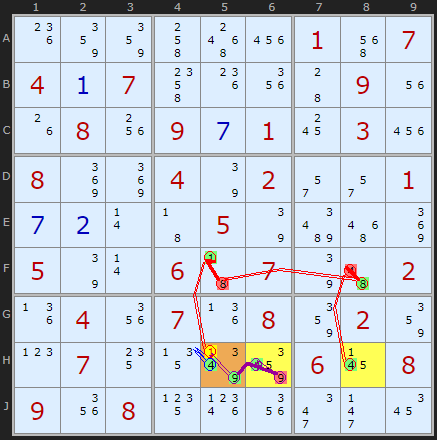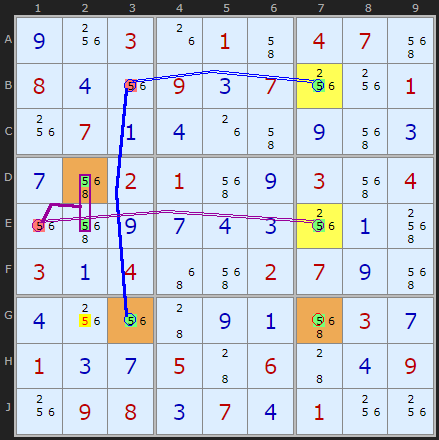| Main Page - Back |
|
From SudokuWiki.org, the puzzle solver's site |

Unit Forcing Chains
If this is your first visit to these strategies, do read the article on Digit Forcing Chains which begins the explanation of this type of strategy and continues to with Cell Forcing Chains. Digit and Cell Forcing Chains are simpler to identify.
If we are forcing a result from a single cell we are obliged to look at all the numbers in that cell. But the logic can be flipped on its head by considering all of X on a unit. If you have three 8s on a row, you know one of those will be the solution. It may be possible to force an elimination by finding a target which can't be true no matter which of those 8s will it turns out to be.
If we are forcing a result from a single cell we are obliged to look at all the numbers in that cell. But the logic can be flipped on its head by considering all of X on a unit. If you have three 8s on a row, you know one of those will be the solution. It may be possible to force an elimination by finding a target which can't be true no matter which of those 8s will it turns out to be.

I do know of some Dual Unit Forcing Chains but they are part of such nightmarish puzzles I don't want to use them for examples. They are pretty rare considering that Alternating Inference Chains are sought after first. So we are going to plunge straight into a Triple.

The second chain, purple, from H7 means no 8 in that cell to 8 must be in A7 (strong link) which takes of 8 in C8. Therefore 8 must go in C1 knocking out the 9. It's also a short chain: +5[H7]-8[H7]+8[A7] -8[C8]+8[C1]-9[C1].
The final chain, in red, obliges J1 to be a 9 removing 9 as an option in C1. Quite a clear and short set of inferences.

Sometimes the target candidate can be on one of the Unit Forcing Chain cells as it is in this second example. We're looking at the 4s in row H - which occur on H5, H6 and H8. The target is 1 on H5. Just the +4 on H8 has a respectable chain: +4[H8]-4[F8]+8[F8] -8[F5]+1[F5]-1[H55.
The "blue" chains consists of turning the 4 on in H5 which must turn off the 1. The purple chain is next door on and you should be able to trace it.
Type 4

Type 4: All three 5s in Col 7 make chains which end in +5, so candidates that can see all chain ends can be eliminated:
- 5 can be removed from G2
+5[B7]-5[B3]+5[G3]
+5[E7]-5[E1]+5[D2|E2]
+5[G7]